Shichuan Chen
SigNet: An Advanced Deep Learning Framework for Radio Signal Classification
Oct 28, 2020

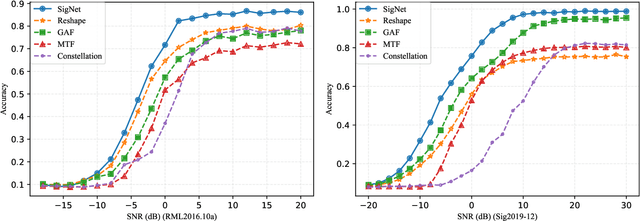
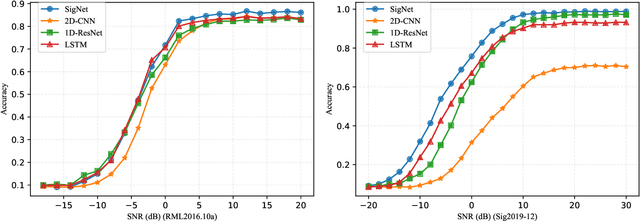
Abstract:Deep learning methods achieve great success in many areas due to their powerful feature extraction capabilities and end-to-end training mechanism, and recently they are also introduced for radio signal modulation classification. In this paper, we propose a novel deep learning framework called SigNet, where a signal-to-matrix (S2M) operator is adopted to convert the original signal into a square matrix first and is co-trained with a follow-up CNN architecture for classification. This model is further accelerated by integrating 1D convolution operators, leading to the upgraded model SigNet2.0. The experiments on two signal datasets show that both SigNet and SigNet2.0 outperform a number of well-known baselines, achieving the state-of-the-art performance. Notably, they obtain significantly higher accuracy than 1D-ResNet and 2D-CNN (at most increasing 70.5\%), while much faster than LSTM (at most saving 88.0\% training time). More interestingly, our proposed models behave extremely well in few-shot learning when a small training data set is provided. They can achieve a relatively high accuracy even when 1\% training data are kept, while other baseline models may lose their effectiveness much more quickly as the datasets get smaller. Such result suggests that SigNet/SigNet2.0 could be extremely useful in the situations where labeled signal data are difficult to obtain.
Spectrum Sensing Based on Deep Learning Classification for Cognitive Radios
Sep 13, 2019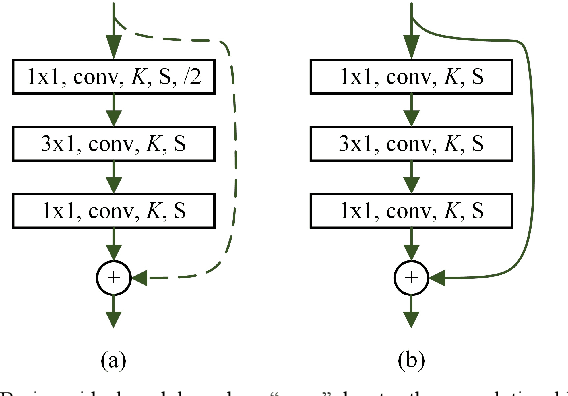
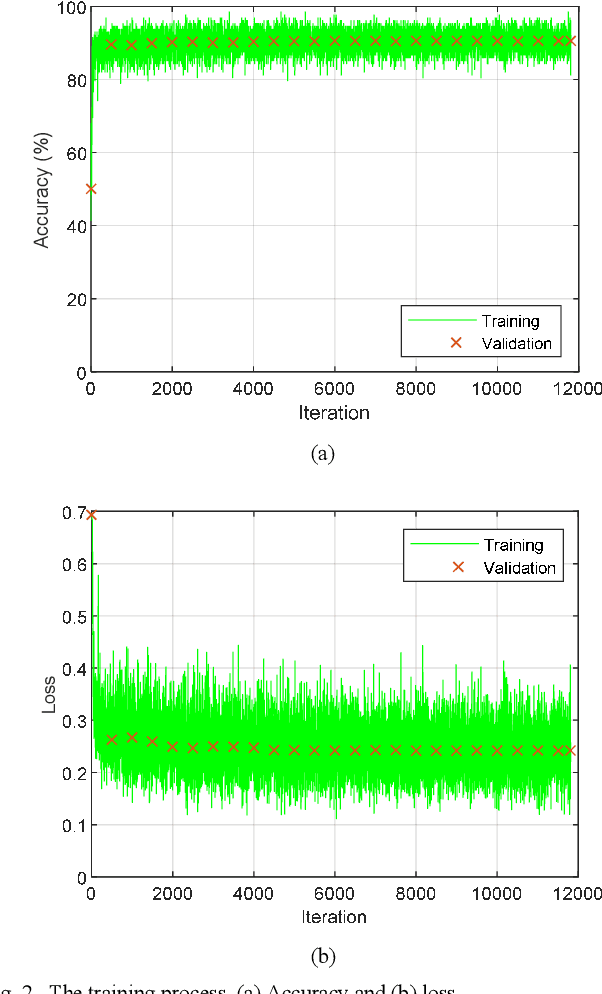
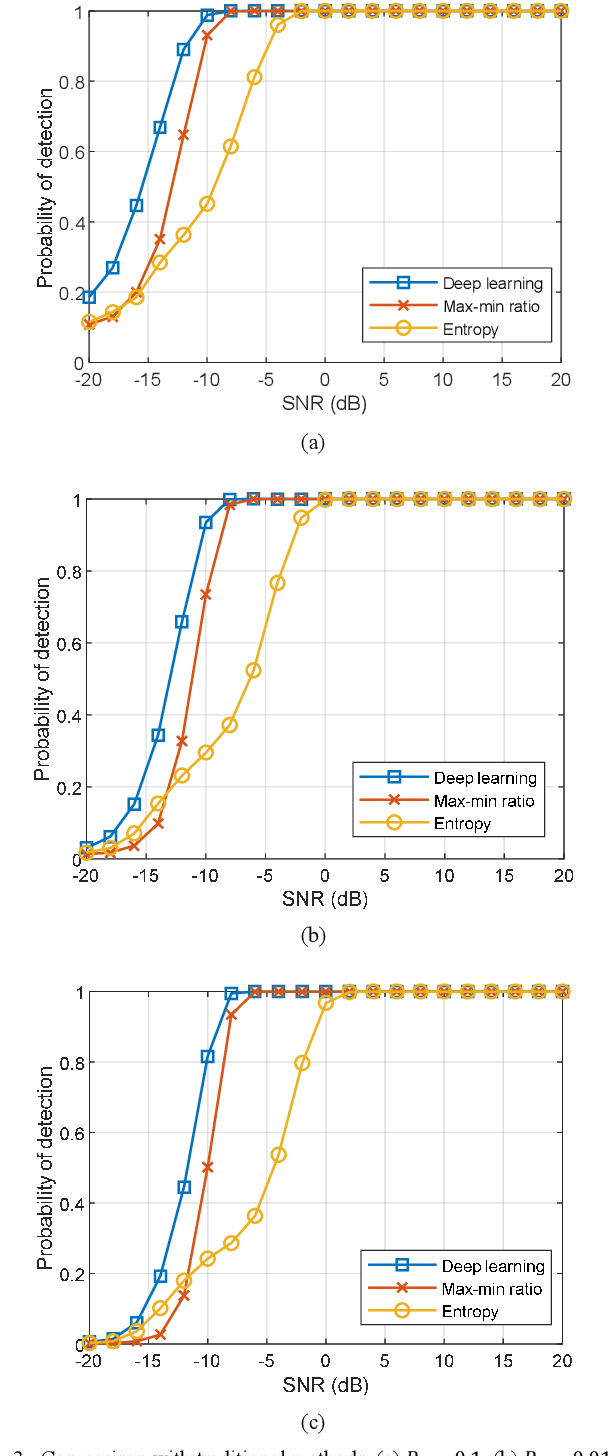
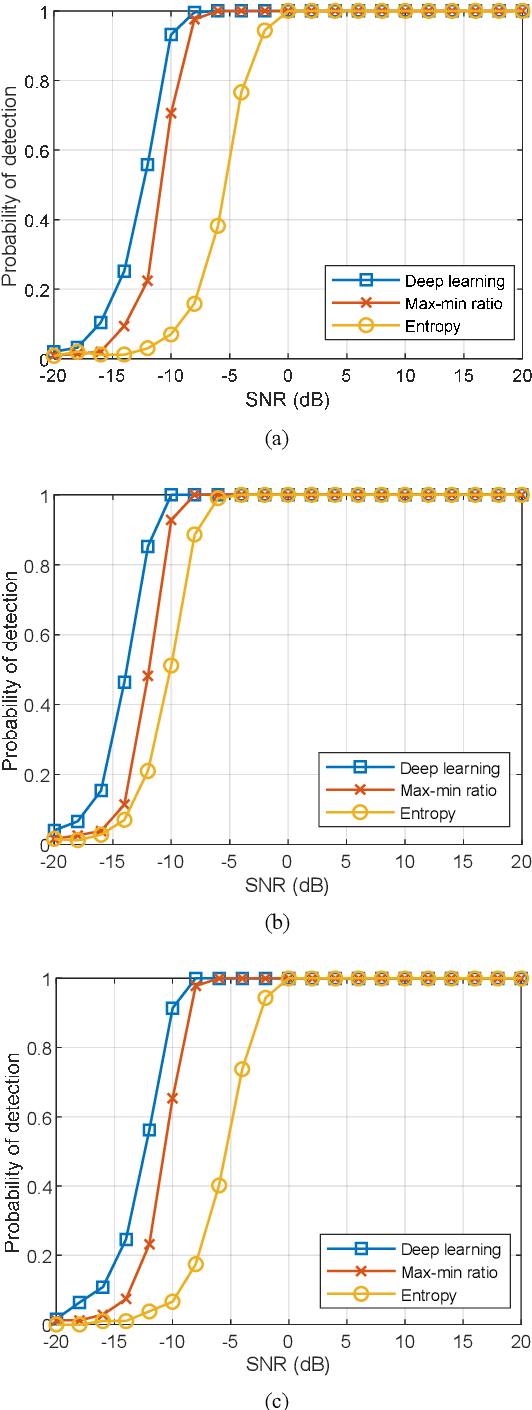
Abstract:Spectrum sensing is a key technology for cognitive radios. We present spectrum sensing as a classification problem and propose a sensing method based on deep learning classification. We normalize the received signal power to overcome the effects of noise power uncertainty. We train the model with as many types of signals as possible as well as noise data to enable the trained network model to adapt to untrained new signals. We also use transfer learning strategies to improve the performance for real-world signals. Extensive experiments are conducted to evaluate the performance of this method. The simulation results show that the proposed method performs better than two traditional spectrum sensing methods, i.e., maximum-minimum eigenvalue ratio-based method and frequency domain entropy-based method. In addition, the experimental results of the new untrained signal types show that our method can adapt to the detection of these new signals. Furthermore, the real-world signal detection experiment results show that the detection performance can be further improved by transfer learning. Finally, experiments under colored noise show that our proposed method has superior detection performance under colored noise, while the traditional methods have a significant performance degradation, which further validate the superiority of our method.
Deep Learning for Large-Scale Real-World ACARS and ADS-B Radio Signal Classification
Apr 20, 2019
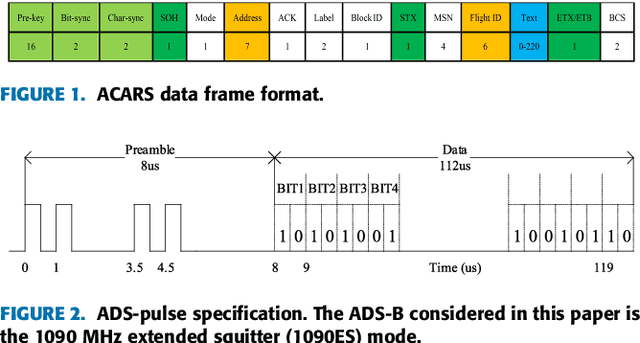

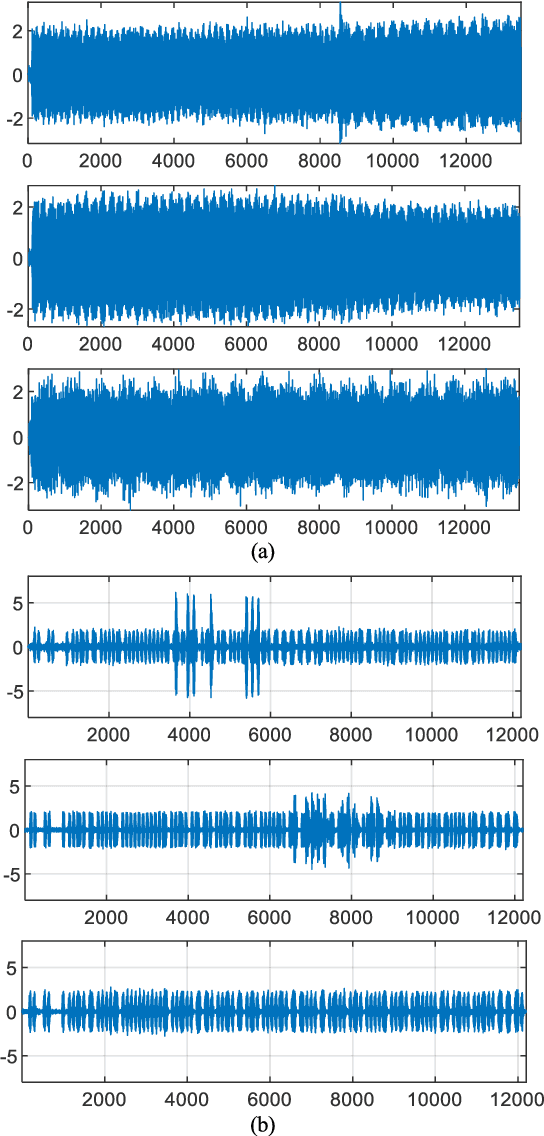
Abstract:Radio signal classification has a very wide range of applications in the field of wireless communications and electromagnetic spectrum management. In recent years, deep learning has been used to solve the problem of radio signal classification and has achieved good results. However, the radio signal data currently used is very limited in scale. In order to verify the performance of the deep learning-based radio signal classification on real radio signal data, in this paper we conduct experiments on large-scale real-world ACARS and ADS-B signal data with sample sizes of 900,000 and 1,300,000, respectively, and with categories of 3,143 and 5,157 respectively. We construct an Inception-Residual neural network model for ACARS signal classification and ADS-B signal classification to verify the ability of a single basic deep neural network model to process different types of radio signals, i.e., communication bursts in ACARS and pulse bursts in ADS-B. Experimental results show that the signal classification accuracy of ACARS and ADS-B is 98.1 and 96.3%, respectively. When the signal-to-noise ratio (with injected additive white Gaussian noise) is greater than 9 dB, the classification accuracy is greater than 92%. These experimental results validate the ability of deep learning to classify large-scale real-world radio signals.
 Add to Chrome
Add to Chrome Add to Firefox
Add to Firefox Add to Edge
Add to Edge